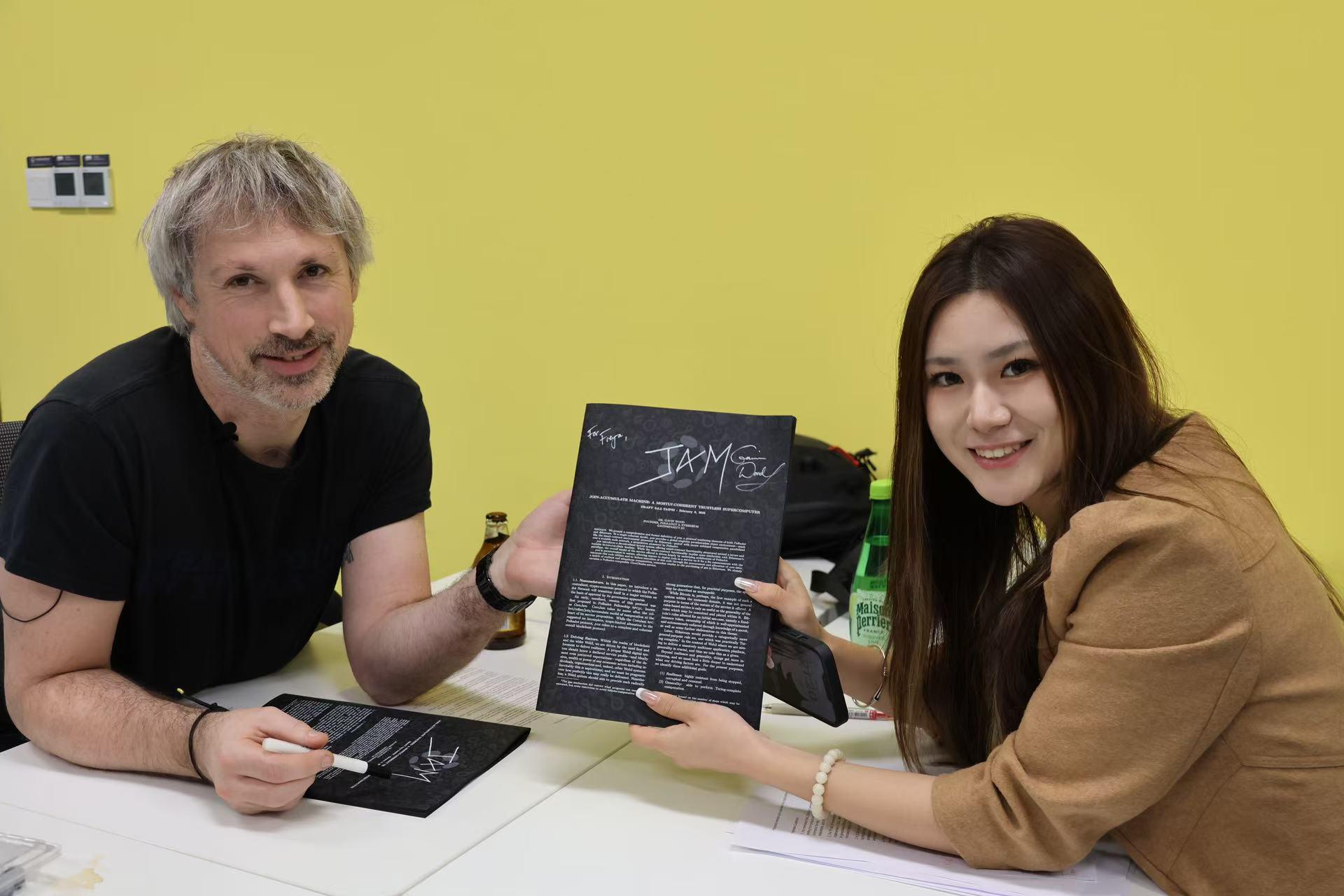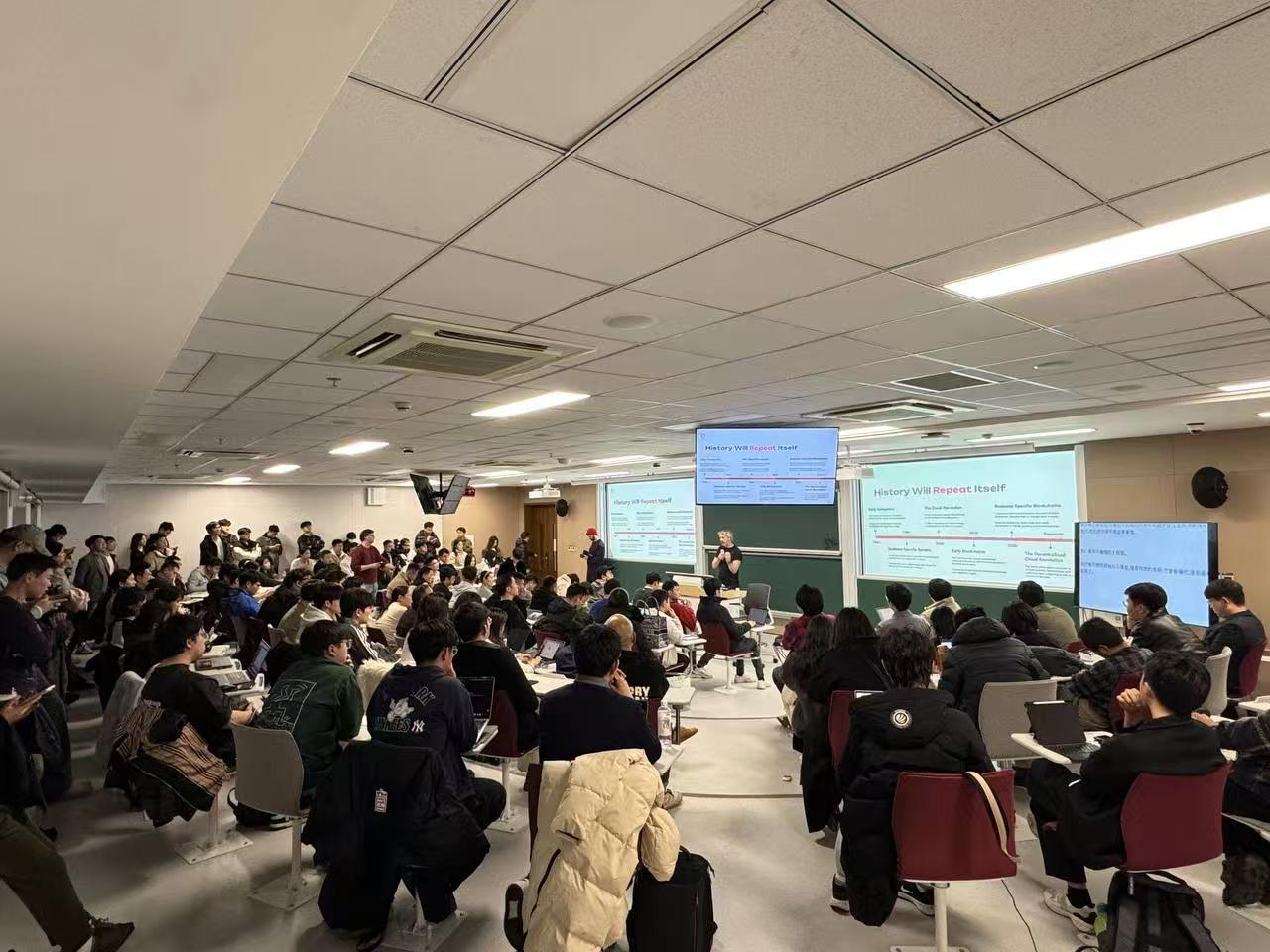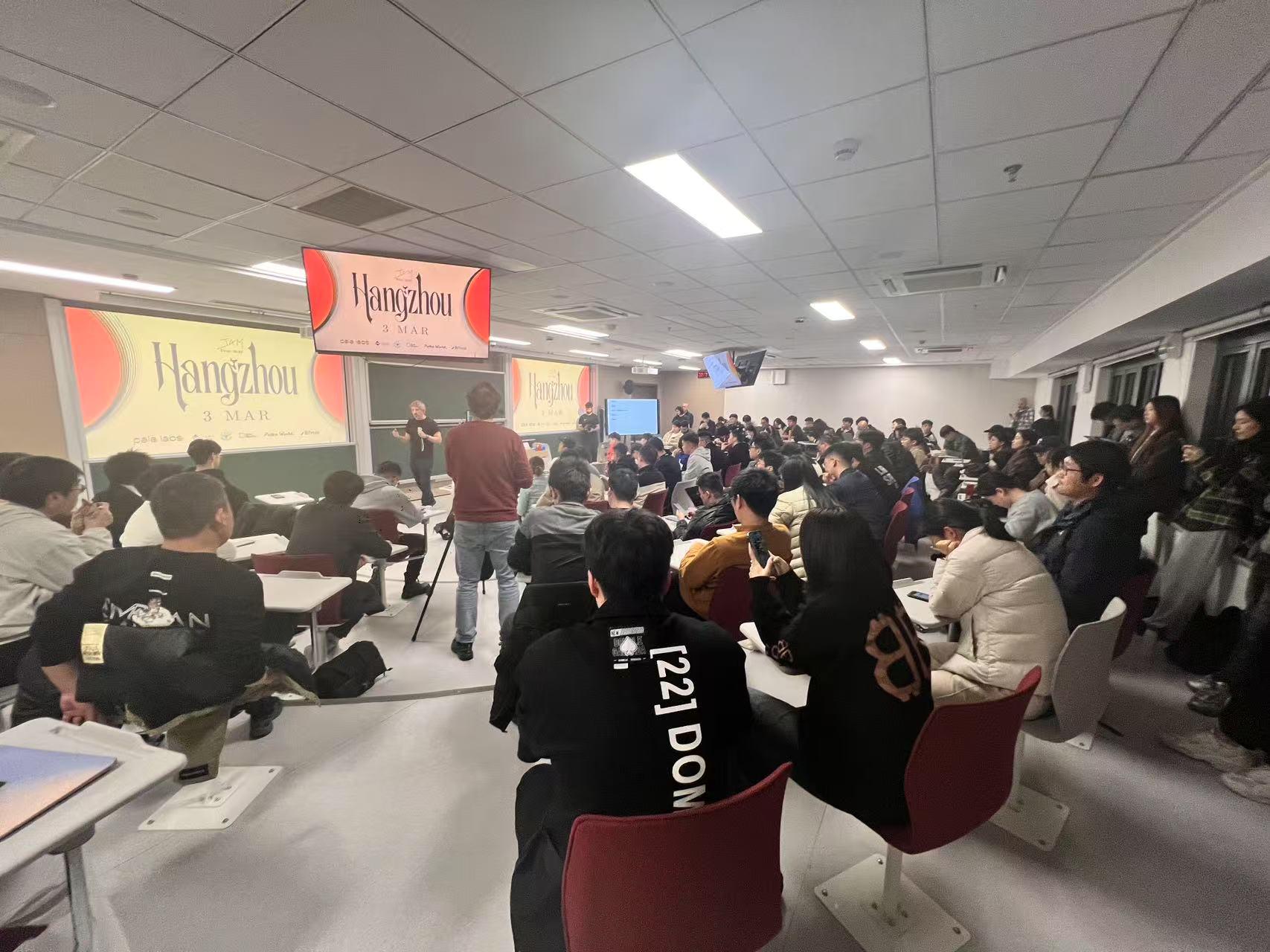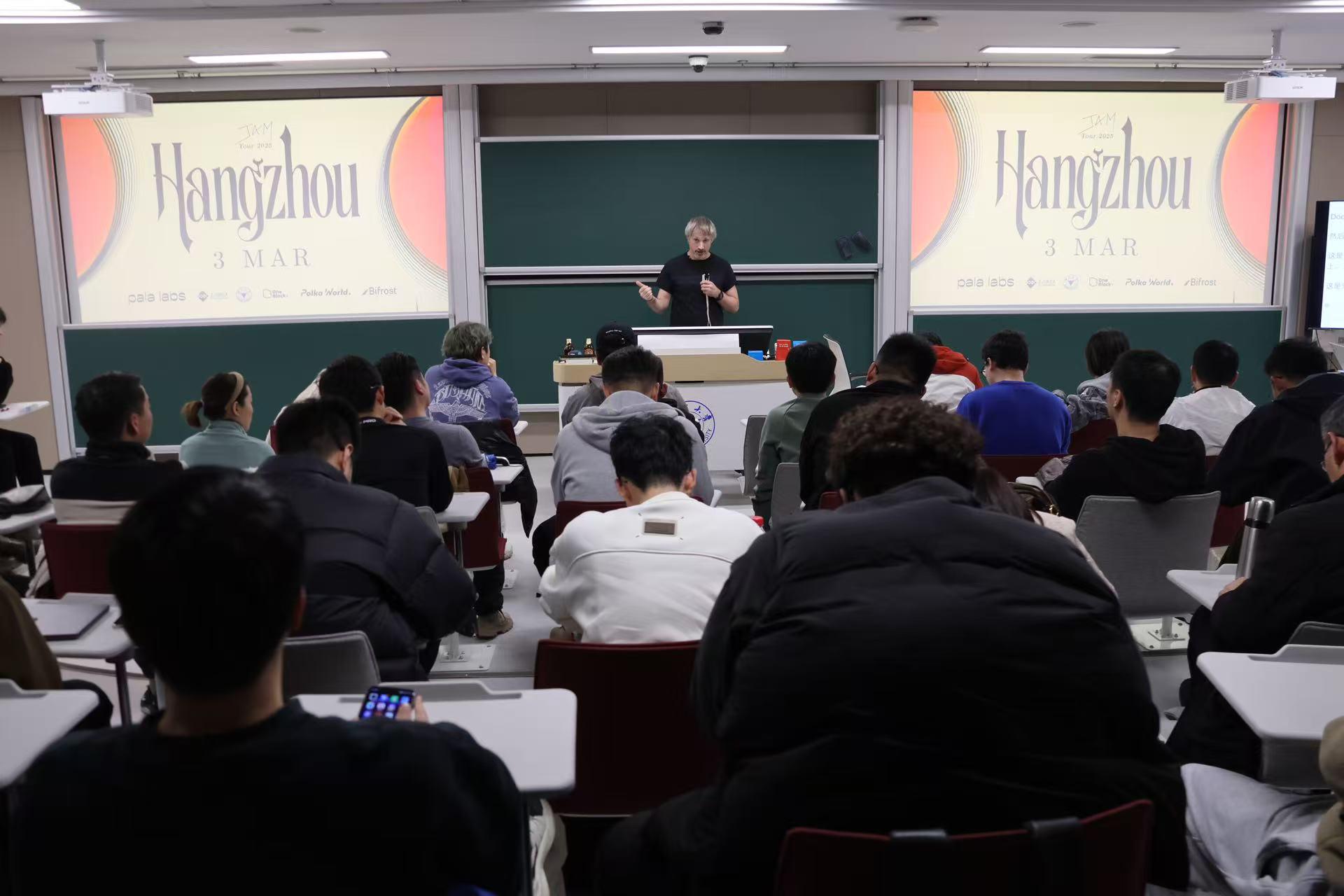Exclusive interview with Gavin, founder of Polkadot: From multi-chain network to world computer, decrypting JAM computing platform and Web3 innovation path

Interview: Freya, PANews
Compiled by: Yuliya, PANews
In the development of blockchain technology, Gavin Wood has left a strong mark. As the founder of Polkadot, the co-founder of Ethereum and the originator of the concept of Web3, Gavin Wood is undoubtedly an iconic figure in the blockchain field. In 2025, the year of Polkadot's key transformation, Gavin Wood started his Asian tour with his latest technological achievement, JAM (Join-Accumulate Machine). At the event in Hangzhou, PANews conducted an exclusive interview with this Web3 industry leader, and discussed in depth Polkadot's technological innovation, ecological development and his unique insights into the future of Web3.
Gavin Wood's career is full of legends. From a PhD in Computer Science at the University of York in the UK to a core developer of Ethereum, to the creation of Polkadot and its promotion to become a leader in the multi-chain ecosystem, every step he took has profoundly influenced the development trajectory of the blockchain industry. However, Gavin Wood is not just a technology geek, he is also a part-time DJ who loves music. In the interview, he admitted that although his current work focus is almost entirely on the development of JAM, he still hopes to regain his identity as a DJ and find balance and inspiration in music. This dual love for technology and art also makes Gavin Wood stand out in the blockchain field.
In the interview, Gavin Wood detailed the many technical breakthroughs that Polkadot has achieved this year, including the optimization of asynchronous backtracking, the new SDK release cycle, and the significant improvement of the decentralization of verification nodes. He specifically mentioned that the "Spam Mining" performance benchmark of the Polkadot ecosystem proved its leading position in scalability. In addition, the Web3 Foundation has invested 10 million DOT funds in the development of the JAM ecosystem, aiming to cultivate JAM development teams around the world and promote the implementation of this revolutionary computing platform.
The launch of JAM marks Polkadot's transformation from a multi-chain network to a "world computer". Gavin Wood emphasized that JAM is not just a smart contract system, but a highly versatile computing platform that can run conventional software and achieve ultra-large-scale computing power. This technological breakthrough has elevated the concept of blockchain from a "distributed ledger" to a whole new level, providing unlimited possibilities for future decentralized applications.
When talking about the future of Web3, Gavin Wood said that it is still a long process to achieve a truly user-sovereign Internet, but he is confident in Polkadot's role in this process. In addition, Gavin Wood also shared his views on the future of the crypto industry. He believes that despite some short-term speculation in the industry, projects that are truly committed to solving technical problems will eventually stand out. He encourages newcomers and entrepreneurs to remain curious, be brave to experiment, and deeply understand the design intent and application scenarios of blockchain technology.
The following is a transcript of the interview:

Key achievements and ecological status
PANews: What are Polkadot's key achievements this year? Which progress has exceeded expectations, and which is relatively unsatisfactory?
Gavin Wood : 2024 is indeed a turning point, from cutting-edge research to product optimization and stability improvement. There are mainly two aspects of improvement: one is speed optimization, such as asynchronous backtracking; the other is development stability optimization, such as adopting a new SDK release cycle, releasing a long-term support (LTS) version every three months, and regular maintenance every two years.
At the end of 2024, we successfully demonstrated the “Spam Mining” performance of the Polkadot ecosystem. This performance benchmark proved that the project is far ahead of other blockchain projects in terms of scalability.
In addition, the decentralization of verification nodes has also been significantly improved, although this relies more on the guidance of the technical framework rather than enforcement.
As for which developments are not satisfactory, there are no particularly outstanding deficiencies at present. Each of our optimizations is carried out as planned and has achieved the expected results.
PANews: The Web3 Foundation has invested 10 million DOTs in the development of the JAM (Join-Accumulate Machine) ecosystem. How will these resources be allocated? Are there specific areas (such as DeFi or games) that will receive priority support?
Gavin Wood : The goal of the 10 million DOT fund is to incentivize the implementation of JAM, rather than the development of a broader ecosystem. We hope to use this fund to build a decentralized JAM development team so that the development of JAM will no longer rely solely on the Web3 Foundation and Parity, but will expand to a global scale.
Our goal is to train dozens of JAM development teams and build hundreds of JAM experts who can not only develop JAM implementations, but also build services based on these implementations. This is a complex protocol, and the complexity of modern blockchain protocols is increasing, so talents who deeply understand the protocol are needed to promote the implementation of innovative applications. Therefore, the focus of this fund is not to support specific areas such as DeFi or games, but to build a strong technical infrastructure and professional talent pool.
Funding will be allocated based on a milestone system, with a total of five milestones set. The last milestone is particularly critical, requiring an independent external security audit to ensure that the implemented code is ready for deployment in a real blockchain environment.

Technological innovation and future planning
PANews: Your proposed “Proof-of-Personhood” plan will be implemented in 2025 and aims to use ZK to solve identity verification challenges in the era of generative AI. How will this mechanism affect the entire industry?
Gavin Wood : First of all, it should be clear that this system is designed to solve the problem of "individuality" rather than "identity". As people's lives move more and more online, the digital world faces a fundamental challenge: how to ensure that the object we interact with is indeed a real human individual.
The complexity of this problem lies in the fact that humans are biological beings, not digital natives. We interact with the digital world through devices such as mobile phones and computers, but it is actually the software that communicates, not the people themselves. This situation has become more serious against the background of the rapid development of generative AI technology. AI systems are now able to communicate like humans, can speak, write, understand text, and even create pictures and music, and understand the content of images. This technological progress, combined with the in-depth development of social digitization, has brought unprecedented challenges.
Compared to the era before the 1900s, when it was difficult for people to be imitated or impersonated by machines because digital systems did not exist, now we can easily be misled into mistaking automated systems for real humans. This is the core problem that personal identification mechanisms are designed to solve.
This technology aims to rebalance the scales of human-machine interaction in the digital world. While this problem manifests itself to varying degrees in different societies, it will ultimately become a global challenge. The implementation of a personal identification mechanism will help establish a fundamental truth in the digital world: allowing users to accurately determine whether they are interacting with a real person or a machine.
PANews: Compared with the early parachain architecture, what are the main essential improvements that JAM brings?
Gavin Wood : JAM represents a major evolution in blockchain. Although from a technical perspective it is just an improvement on Polkadot's existing technology (most of which already exists in Polkadot, except for the JAM virtual machine), its impact is revolutionary in terms of what blockchain can do.
Blockchain was originally called "Distributed Ledger", a term commonly used in the financial industry to describe its functions. But in fact, blockchain is much more than just a ledger, especially after Ethereum introduced smart contracts, it was given stronger computing power. However, previous blockchains are still limited to a "ledger" model, while JAM aims to create a true "World Computer", which is not just a smart contract system, but a highly versatile computing platform that can run conventional software.
In terms of performance, our modeling shows that JAM computing power will be 10,000 to 1,000,000 times higher than Ethereum's current level. Of course, models are prone to inaccurate conclusions, and many blockchain projects have the problem of exaggeration. But Polkadot's performance has been verified in a real environment, and we have conducted rigorous measurements using the "Toast small supercomputer" to ensure the accuracy of these modeling data. If the data is correct, JAM will truly achieve super-large-scale computing power and become an important milestone in blockchain technology.
PA News : How do you view the future development of Kusama?
Gavin Wood : Kusama was originally designed as Polkadot's "canary" test network, whose main purpose is to provide an experimental venue for Polkadot's new features and upgrades to verify their feasibility and stability. From this perspective, Kusama has indeed fulfilled its mission well.
But now, Kusama should break through its original positioning and shift its focus to the exploration of more cutting-edge fields while maintaining its experimental nature. In particular, the following directions:
- Zero Knowledge Cryptography
- Proof-of-Personhood
- Other areas with innovation potential
In addition, Kusama has 10 million DOTs at the time of creation, and these resources should be used reasonably to support future development.
PA News : Compared to Solana and Ethereum, how do you think Polkadot can better attract developers and users?
Gavin Wood: In the past, there were multiple parachains within the Polkadot ecosystem that provided EVM compatibility, but they were independent ecosystems with their own tokens and teams. This situation has changed in Polkadot 2.0 - Polkadot will natively support EVM-compatible smart contracts and run directly in the DOT environment.
This is an important shift for Polkadot, although not as radical as JAM (Join-Accumulate Machine), but still strategically significant. It positions Polkadot as a high-performance and scalable smart contract platform, and supports Solidity and Ethereum compatible technologies. In addition, trustless bridging solutions such as Hyper Bridge and Snow Bridge within the Polkadot ecosystem will also enable it to interact seamlessly with EVM-compatible networks.
Polkadot's PVM (Polkadot Virtual Machine) is highly versatile and compatible with almost any virtual machine as long as it does not require special runtime support. For example, MoveVM may be suitable for PVM, and SVM (Solana Virtual Machine) obviously meets this standard. This is also the reason why Polkadot turned to PVM - its openness allows any language that meets the deterministic and self-contained characteristics to run on it.
In terms of the competitive landscape, Polkadot has not deviated from its original route, but has chosen a more flexible approach to adapt to market demand. The Ethereum ecosystem has accumulated a large number of developers, so Polkadot should adopt a more inclusive attitude, rather than sticking to WebAssembly and its unique development methods, to cater to market demand and support the languages and tools that developers like.

Web3 Vision and DOT ETF Outlook
PA News : How far is the industry from a truly user-dominated Internet? How has the role of Polkadot changed?
Gavin Wood: Since the concept of Web3 was proposed in 2014, it has been a long process to achieve a truly user-sovereign Internet. Although this process has taken longer than originally expected, this transformation could not have been completed in the short term.
Polkadot was originally a heterogeneous and scalable multi-chain network, which is largely similar to the direction Ethereum will develop in the next four or five years. Although some people may point out the specific differences between the two, in essence, Polkadot’s original goal is exactly the vision that Ethereum now hopes to achieve.
However, with the launch of JAM, Polkadot's focus has shifted from interoperability to scalability and composability. While multi-chain architectures are still valuable, JAM provides developers with greater freedom so that they are not restricted to a specific model. Polkadot has now transformed from a heterogeneous and scalable multi-chain network to a "world computer" focused on scalability and composability. This shift not only enables it to support heterogeneous L2 blockchains, but also makes the deployment and execution of smart contracts more efficient.
PA News : Nasdaq submitted a revised 19b-4 document for the DOT spot ETF at the end of February 2024, and the market generally expects that the DOT spot ETF will be approved in 2025. What impact do you think this will have on the Polkadot ecosystem?
Gavin Wood : The Web3 Foundation has done a lot of work in the previous regulatory environment to prove that DOT does not fall into the category of securities. In addition to Gary Gensler, then chairman of the SEC, the dialogue with regulators was generally positive and constructive and received considerable support. However, there are currently two major uncertainties:
- The current government management has changed, which may lead to a change in regulatory attitudes
- The financial market itself is an extremely complex system, and the impact of any policy changes is difficult to accurately predict.
Regarding the impact of ETF approval on the ecosystem, I think the financial market is as unpredictable as "black magic". In such a chaotic and complex system, it is difficult to accurately estimate the specific impact of any single action.

Advice for newbies/entrepreneurs
PA News : How do you see the future of the crypto industry? For newcomers, how can they develop a career in this industry?
Gavin Wood: It depends on their goals. If by “crypto industry” you mean “token industry” or “cryptocurrency industry”, then the industry is going downhill, and fast. More and more projects are not trying to solve real technical problems, but are supporting fraudulent projects and promoting excessive centralization without considering broader security.
What is even more disappointing is that some people in power are making decisions that allow some industry players to use public funds for their own benefit. This is not good for the development of the industry. However, I still believe that those projects that are truly committed to solving technical problems and can be successfully implemented will eventually surpass those speculators who only focus on short-term benefits.
2025 may not be a particularly optimistic year. But for those students who are truly committed to innovation and dare to take on challenges, this is still a time of opportunity. Although they may not receive much attention or sufficient funding, we will still see some important technological breakthroughs in the next 18 months.
PA News : What advice do you have for entrepreneurs?
Gavin Wood: The key is to truly create value, maintain an experimental spirit, and promote innovation. We must deeply understand the design intent of the blockchain system and the actual application scenarios, rather than blindly following the trend. Some projects want to deploy applications on the blockchain without understanding why the blockchain is needed. Some teams also want to create a blockchain without clarifying its necessity.
Real innovation comes from deep thinking and constant experimentation. Be bold in trying, even if nine out of ten experiments fail, it doesn’t matter, because the experience of failure is equally valuable, and an occasional success may lead to unexpected breakthroughs. Many great discoveries often come from curiosity and interdisciplinary thinking.
Take the example of physicist Richard Feynman, who won a Nobel Prize for quantum physics research that began with a casual observation in a restaurant. He noticed that a spinning plate always wobbled slightly in midair, and he couldn't understand why this happened. This seemingly insignificant question eventually led to an important scientific discovery.
So stay curious, explore bravely, and don’t underestimate the power of interdisciplinary thinking. Real innovation often comes from those who dare to ask questions and explore their answers.
PA News : As a part-time DJ, do you still frequently perform DJ shows? How do you maintain a balance between your hobby and work?
Gavin Wood: I have almost no time to DJ at the moment. Hopefully I’ll be able to get some time back into it soon. But for now, my main focus is on JAM development, coding, and the Proof-of-Personhood project.
Still, I think it’s important to have balance in life. I’m grateful to be able to spend some time with my family, and they understand my need to travel, like this time in China for a speaking tour. At the same time, I also think that making art is a great way to express myself. For me, math and coding are part of art in some ways, but I do love music and I hope to find more time for myself this year.
You May Also Like

Fed Rate Cuts May Push Crypto Prices Up As ‘Digital Gold’ Replaces TradFi

Golden Trump Bitcoin Statue Unveiled Outside US Capitol Honoring His Crypto Support
